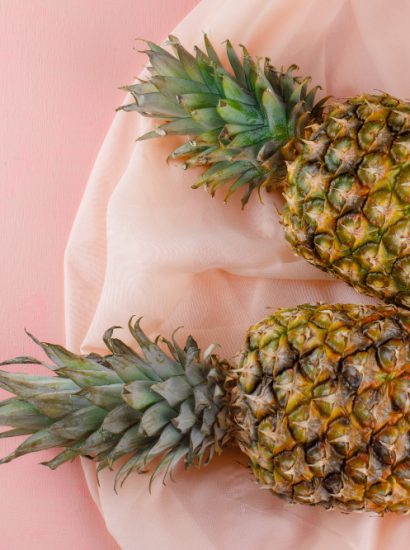If you have ever spotted a scoop of pastel purple ice cream at an Asian dessert shop, you were likely looking at taro ice cream. This colorful and creamy treat has gained international popularity for its unique flavor, beautiful hue, and cultural roots.
Taro ice cream is made from taro root, a starchy vegetable widely used in Asian cuisine. Its naturally nutty and subtly sweet flavor makes it a perfect ingredient for desserts, including ice cream, bubble tea, and pastries. In this article, we’ll explore what taro ice cream is, where it originated, what it tastes like, and how you can make it at home.
What Exactly Is Taro
Taro is a tropical root vegetable, scientifically known as Colocasia esculenta. It has brown, rough skin on the outside and white or light purple flesh on the inside, depending on the variety. When cooked, taro develops a smooth texture similar to potatoes but with a sweeter, nuttier flavor.
This root vegetable has been a staple in Asian, Pacific Island, and African cuisines for centuries. It’s used in both savory and sweet dishes, from steamed taro and soups to puddings and cakes. Because of its natural starchiness and delicate sweetness, taro blends beautifully with milk and sugar—making it ideal for ice cream.
The Origin of Taro Ice Cream
Taro ice cream originated in Southeast Asia, particularly in the Philippines, Japan, and Vietnam, where taro-based desserts are common. In Hawaii, taro (known locally as kalo) has long been part of traditional cuisine, and Hawaiian ice cream makers began using it to create local flavors.
As Asian cuisine spread globally, taro ice cream found its way into dessert shops in the United States, Europe, and beyond. Today, you can find taro ice cream in specialty Asian stores, ice cream parlors, and even major supermarket brands.
The Unique Taste of Taro Ice Cream
Taro ice cream stands out because of its distinctive flavor profile. It tastes slightly nutty, creamy, and gently sweet, with a hint of vanilla-like warmth. Some people describe it as a blend between vanilla, coconut, and sweet potato.
Unlike many desserts that rely on heavy sweetness, taro ice cream delivers a balanced, subtle taste. The natural earthy undertone makes it appealing to those who prefer desserts that are not overly sugary. The texture is rich and velvety, especially when made with real taro root and full-fat dairy or coconut milk.
The Natural Color of Taro Ice Cream
One of the most eye-catching features of taro ice cream is its soft purple or lavender color. Many assume that this color is artificial, but real taro root naturally has a pale lilac tint that becomes more vibrant when cooked and blended with milk.
However, in commercial products, some ice cream makers enhance the purple color using natural or food-safe colorants to make it more visually appealing. Whether pale or deep violet, the signature purple shade has become synonymous with taro-flavored desserts.
Health Benefits of Taro Ice Cream
While ice cream is generally considered an indulgence, taro offers a few nutritional benefits that make it a more wholesome choice compared to some other flavors.
Taro is rich in dietary fiber, which supports healthy digestion. It also contains vitamins such as vitamin E, vitamin C, and B6, along with minerals like potassium and manganese. Additionally, taro is naturally gluten-free, making it a suitable option for those with gluten sensitivities.
When combined with coconut milk or dairy alternatives, taro ice cream can be made vegan or lactose-free without sacrificing flavor or creaminess.
Ingredients You Need to Make Taro Ice Cream
Making taro ice cream at home is easier than it looks. You can use fresh taro root or taro paste available in many Asian grocery stores. Here are the key ingredients:
- Taro root or taro paste: The star ingredient that provides flavor and color.
- Milk: Whole milk or coconut milk for creaminess.
- Heavy cream: Adds richness and smooth texture.
- Sugar: Enhances sweetness and balances taro’s earthy taste.
- Vanilla extract: Adds depth and warmth.
- Salt: A pinch helps enhance overall flavor.
Optional ingredients include condensed milk for a sweeter, denser texture or purple yam extract if you prefer a deeper color.
Step-by-Step Homemade Taro Ice Cream Recipe
Here’s a simple way to make creamy taro ice cream from scratch:
Step 1: Prepare the Taro
Peel and dice the taro root into small cubes. Boil in water for about 20 minutes until soft. Drain and mash the taro until smooth, or blend it with a bit of milk to create a creamy puree.
Step 2: Make the Base
In a saucepan, combine milk, sugar, and a pinch of salt. Heat over medium heat until the sugar dissolves completely. Stir in the taro puree and vanilla extract. Mix until the base becomes smooth and evenly colored.
Step 3: Add Cream and Chill
Remove from heat and add heavy cream. Stir thoroughly, then let the mixture cool. Once it reaches room temperature, cover it and refrigerate for at least 3 hours or overnight.
Step 4: Churn the Ice Cream
Pour the chilled mixture into an ice cream maker and churn according to the manufacturer’s instructions until thick and creamy.
Step 5: Freeze and Serve
Transfer the churned ice cream to a container, smooth the surface, and freeze for 4 to 6 hours. When ready to serve, scoop and enjoy your homemade taro ice cream.
If you do not have an ice cream maker, you can use the freeze-and-stir method by mixing the base every 30 minutes for a few hours until it reaches the right texture.
Popular Variations of Taro Ice Cream
Taro ice cream is versatile and can be combined with other flavors for unique creations. Here are some popular variations:
- Taro Coconut Ice Cream: Adds tropical flavor and richness.
- Taro and Ube Blend: Combines taro’s mild nuttiness with the deeper sweetness of purple yam.
- Taro Green Tea Ice Cream: Balances earthy taro with refreshing matcha notes.
- Taro Vanilla Swirl: Enhances the creaminess and softens the earthy flavor.
- Vegan Taro Ice Cream: Uses coconut milk or oat milk instead of dairy.
Each variation highlights taro’s versatility while offering a new flavor experience.
Where to Buy Taro Ice Cream
If you prefer to skip the homemade version, you can find taro ice cream in many Asian supermarkets and dessert shops. Some well-known brands that offer taro ice cream include Maeda-en, Magnolia, and Trader Joe’s seasonal options.
You can also find it at bubble tea cafes, where taro flavor is a staple. Many ice cream shops now include taro as a trendy flavor option due to its unique taste and Instagram-worthy color.
Taro Ice Cream in Global Dessert Culture
Taro ice cream’s popularity has spread far beyond Asia. In the United States and Canada, it has become a favorite in fusion dessert shops that blend Eastern and Western flavors. In Europe and Australia, it’s often featured in Asian-inspired ice cream parlors and social media dessert trends.
The combination of exotic flavor, smooth texture, and visually stunning purple color has made taro ice cream a global dessert sensation. It represents how traditional ingredients can inspire creativity and bridge cultural boundaries.
Conclusion
Taro ice cream is more than just a pretty purple dessert—it’s a flavorful blend of tradition, culture, and modern culinary innovation. With its nutty sweetness, creamy texture, and delicate aroma, it offers a refreshing twist on classic ice cream flavors.
Whether enjoyed in a cone, cup, or alongside other Asian desserts, taro ice cream is a treat worth trying. You can easily make it at home with simple ingredients or find it at your local Asian market. Once you taste its smooth, subtly sweet flavor, it’s easy to see why taro ice cream has captured dessert lovers’ hearts worldwide.
FAQs
1. What does taro ice cream taste like?
Taro ice cream has a creamy, nutty, and slightly sweet flavor with hints of vanilla and coconut. It’s less sugary than typical ice cream flavors.
2. Is taro ice cream made from purple yam (ube)?
No. Taro and ube are different root vegetables, though they both have purple hues. Taro has a lighter, more subtle flavor, while ube is sweeter and darker in color.
3. Is taro ice cream vegan?
Traditional recipes use milk and cream, but you can make a vegan version using coconut or oat milk for similar creaminess.
4. Does taro ice cream contain artificial coloring?
Authentic taro ice cream gets its light purple color naturally from taro root. However, some commercial brands may use added coloring to enhance the shade.
5. Where can I buy taro ice cream?
You can find taro ice cream in Asian grocery stores, specialty dessert shops, and some international supermarkets. It’s also available at many bubble tea cafes.
Also read: Builder Gel vs Gel X: What’s the Difference and Which Is Better for You?









